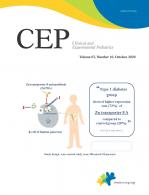Congenital heart disease (CHD) is among the most common congenital defects and is the leading cause of infant death in developed countries. It affects 1ŌĆō2 per 100 live births, with approximately 25% of cases being critical CHD [1,2], Critical CHD presents serious life-threatening conditions that require stabilization with medical treatment such as prostaglandin or cardiac surgery or interventional procedures within months after birth [3]. Critical CHD has a higher incidence in premature than term infants, and preterm birth itself is the main cause of newborn morbidity and mortality. There have been reports of increased mortality and morbidity in premature infants with CHD [4,5]. Therefore, identifying the specific prognostic factors of preterm infants with critical CHD is expected to help identify treatment modality and timing.
The retrospective cohort single-center study conducted by Yoon et al. [6] published in the current issue analyzed the risk factors for in-hospital mortality among premature infants with critical CHD. This is the first report in Korea to analyze use of the classification of Risk Adjustment for Congenital Heart Surgery (RACHS-1) according to CHD complexity or severity. Seventy-eight premature infants were included in this study. Of them, 68 underwent cardiac surgery or intervention, 9 died before surgical treatment, and 1 was discharged without treatment.
The RACHS-1 was proposed as a classification system of the risk of in-hospital mortality according to surgery type used to treat CHD and has been used to study CHD-related risks [7]. However, since some cases of CHD are treated with interventional procedures rather than surgery, studies have analyzed a modified RACHS (m-RACHS) classified by diagnosis and gestational age of newborns as prognostic factors, including diseases treated through interventional procedures and surgery [5]. Since diseases not presented in the m-RACHS classification were included in the cohort of Yoon et al. [6], the researchers further classified them to create an M-RACHS complexity classification and analyzed whether an M-RACHS with higher complexity (M-RACHS 5) was a risk factor for in-hospital death. In this study, risk factors for in-hospital mortality in premature infants with critical CHD were identified as independent risk factors such as very low birth weight, bronchopulmonary dysplasia (BPD), persistent pulmonary hypertension of the newborn (PPHN), and M-RACHS Ōēź 5 through a multivariate analysis. Factors such as postnatal age, postmenstrual age, weight at the time of treatment, and postbirth transfer were not associated with mortality in 68 patients who underwent treatment.
Medical conditions such as BPD or PPHN might be risk factors for outcome, but it was difficult to differentiate between them in this study. In the M-RACHS classification, critical CHD variants such as pulmonary atresia with intact ventricular septum, tricuspid atresia, and Ebstein anomaly were not included, which may limit the application of the new classification in clinical situations.
Several studies have reported on the risk factors for death of premature infants with critical CHD, but the results are inconsistent among different study designs. Nevertheless, premature infants reportedly showed a higher mortality rate than term infants when CHD was present [8], while critical CHD was associated with significantly increased mortality rates in preterm infants (<32-week gestational age or <1,500-g birth weight) [9]. The complexity of CHD or the risk of surgery or intervention becomes a risk factor for mortality [10]. The optimal timing for intervention remains unclear due to the diversity of population characteristics. When technically possible, early primary repair is preferred, but delayed intervention in premature infants may enable weight gain in anticipation of subsequent repair. If surgery is performed when the infant has a body weight that can withstand cardiopulmonary bypass, surgical timing does not seem to be a risk factor for mortality [11]. Preterm infants with CHD more commonly develop BPD than those without CHD because of undergoing prolonged mechanical ventilation and developing congestive heart failure [12].
In conclusion, risk factors for in-hospital mortality in premature infants with critical CHD are unclear. However, characteristics such as gestational age, birth weight, CHD complexity, related medical conditions, and technical accessibility of the surgical approach for the patient could be risk factors for death and should be considered when determining surgical or interventional treatment.





 PDF Links
PDF Links PubReader
PubReader ePub Link
ePub Link PubMed
PubMed Download Citation
Download Citation


